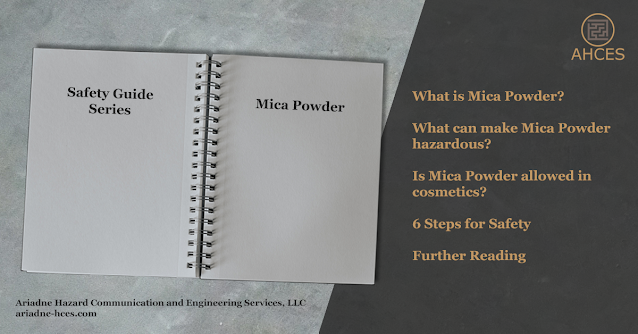Menthol Safety Guide
What is Menthol?
Menthol, also known as menthyl alcohol and 2-isopropyl-5-methylcyclohexanol, is a naturally occurring alcohol produced by plants including the peppermint Mentha x piperita. Menthol is a major component in peppermint essential oil and is used for a wide range of applications across multiple industries, from peppermint fragrances and flavorings to topical pain relievers and cough suppressants.
Menthol has the CAS Number 1490-04-6.
The CAS Number is used to identify menthol as an ingredient on safety data sheets (SDS) and other safety documentation. When looking for menthol as an ingredient in products like peppermint flavoring and fragrances, look for the CAS Number in the composition table.
Notable Properties of Menthol
Menthol is a solid at room temperature, forming white crystals that smell distinctly of peppermint. Menthol is highly soluble in ethanol and volatile oils, which are often used as carriers when menthol is more useful in liquid form.
What Makes Menthol Hazardous?
Menthol is an irritant and can cause skin irritation and serious eye irritation.
Additionally, if menthol is dissolved in a carrier like ethanol, it can also be flammable due to the carrier liquid's flammability.
Menthol Frequently Asked Questions
Is menthol the same thing as mint?
Menthol is associated with many plants in the genus Mentha, including common mint M. spicata. Menthol is found in some of the highest concentrations in the peppermint plant Mentha x piperita.
Many products that are labeled as mint, peppermint, or spearmint flavored or scented will contain some menthol to provide the distinctive cooling sensation and taste.
6 Steps for Safety
Step 1: Read the Warnings
When working with a product for the first time, always read all the safety documents first. This includes safety data sheets, which should be provided by the manufacturer or importer of the menthol product. There may also be an OSHA chemical label or a Consumer Protection label on the packaging of the menthol product. These documents all contain important information on the hazards of the product and instructions on how to mitigate those hazards.
Different compositions in different products may cause additional hazards to be present beyond the properties of product with menthol as the only active ingredient. As many menthol fragrances and flavoring are dissolved in ethanol, which is a flammability hazard, be sure to work with adequate ventilation and fire suppression measures in place with products in this category.
Step 2: Prepare Your Workspace
Creating a safe workspace, sometimes referred to as engineering control, is a key component of working safely with any potentially hazardous substance.
Workspace preparation will vary depending on if the menthol is in solid or liquid form. Both can cause skin and eye irritation. Liquid menthol can have additional hazards based on the solvent and has an additional splash hazard, being able to soak into fabric and cause prolonged contact which can worsen irritation.
Step 3: Gather Your PPE
For handling solid menthol, you will need the following
PPE.
- Eye Protection
- Safety goggles which form a protective seal around the eyes or a combination of safety glasses and a face shield can be used to prevent menthol dust from reaching the eyes.
- Gloves
- Basic disposable gloves, or other rubberized gloves, will prevent menthol from touching the skin on the hands and causing irritation.
For handling liquid menthol, you will need the following
PPE.
- Eye Protection
- Safety goggles which form a protective seal around the eyes can be used to prevent liquid vanillin splash from reaching the eyes.
- Gloves
- Basic disposable gloves, or other rubberized gloves, will prevent menthold from touching the skin on the hands and causing irritation.
- Rubberized Apron
- A rubberized apron, or another body covering that prevents liquid menthol from soaking into clothing, is best to prevent skin exposure.
Step 4: Clear Your Workspace
Having a clear workspace is important for safety as it can prevent accidents caused by tripping, as well as allowing you to easily spot any spills.
This is also a good time to ensure all engineering controls are functional. When working with large quantities of liquid menthol, it is good to have a spill kit on hand to contain liquid spills. Having materials such as activated carbon on hand can also be useful in the event of a large spill to help neutralize odors.
Step 5: Do The Work
If engineering controls and PPE are used properly, working with menthol can be done safely.
If work cannot be completed in one sitting, be sure to properly seal any menthol containers to prevent spills or accidental release when not in use.
Step 6: Clean Up
Dust generation should be avoided when cleaning up solid menthol. Either a vacuum with a filter or a damp cleaning cloth can be used to pick up any stray solid menthol while preventing dust generation.
Liquid menthol can leave residue, so clean up using an absorbent material such as sawdust which can then be swept up.
Be sure to dispose of any waste in accordance with local regulations.
Further Reading
The National Library of Medicine has a PubChem Menthol Summary.
Check out the Safety Guide Series Hub for more safety guides.
Sources Cited
National Center for Biotechnology Information (2024). PubChem Annotation Record for MENTHOL, Source: Hazardous Substances Data Bank (HSDB). Retrieved March 29, 2024 from https://pubchem.ncbi.nlm.nih.gov.
National Center for Biotechnology Information (2024).
PubChem Compound Summary for CID 1254, Menthol. Retrieved March 29, 2024 from
https://pubchem.ncbi.nlm.nih.gov/compound/Menthol.





Comments
Post a Comment